How to make your own cologne with essential oils. Discover what a cologne is and how to structure one through top, heart, and base notes. Learn how to construct harmonious accords and to use these to create a scentsational Signature Fragrance.
In this post, we talk you through the basic equipment you will want to invest in to start making cologne with essential oils as a hobby. Then we explore how to make your own Signature Scent. The post includes a variety of DIY recipes and ideas for making masculine, feminine, and unisex fragrances. We have included instructions on how to make cologne with essential oils with a carrier to make the perfume more nourishing for the skin and directions on how to make cologne with essential oils but no carrier oil. We explore making cologne with essential oils only, with fragrance oils only, and how to use a combination of the two.
Discover which version of the results you like the best…come and explore the exciting process of making cologne with essential oils.
A Foreword
Before You Read This Article About Making Cologne with Essential Oil…
Visit an older post I made about How To Make Perfume With Essential Oils.
This will teach you scent notes and about something called their drydown which is how some evaporate faster than others. The dry down affects how we experience the smell.
Start there to get a good grounding on how to construct a scent.
This is a Cologne with essential oils post is a long article, with a lot of information, so here are the contents with links, in case you want to jump to any sections.
What is Cologne With Essential Oils
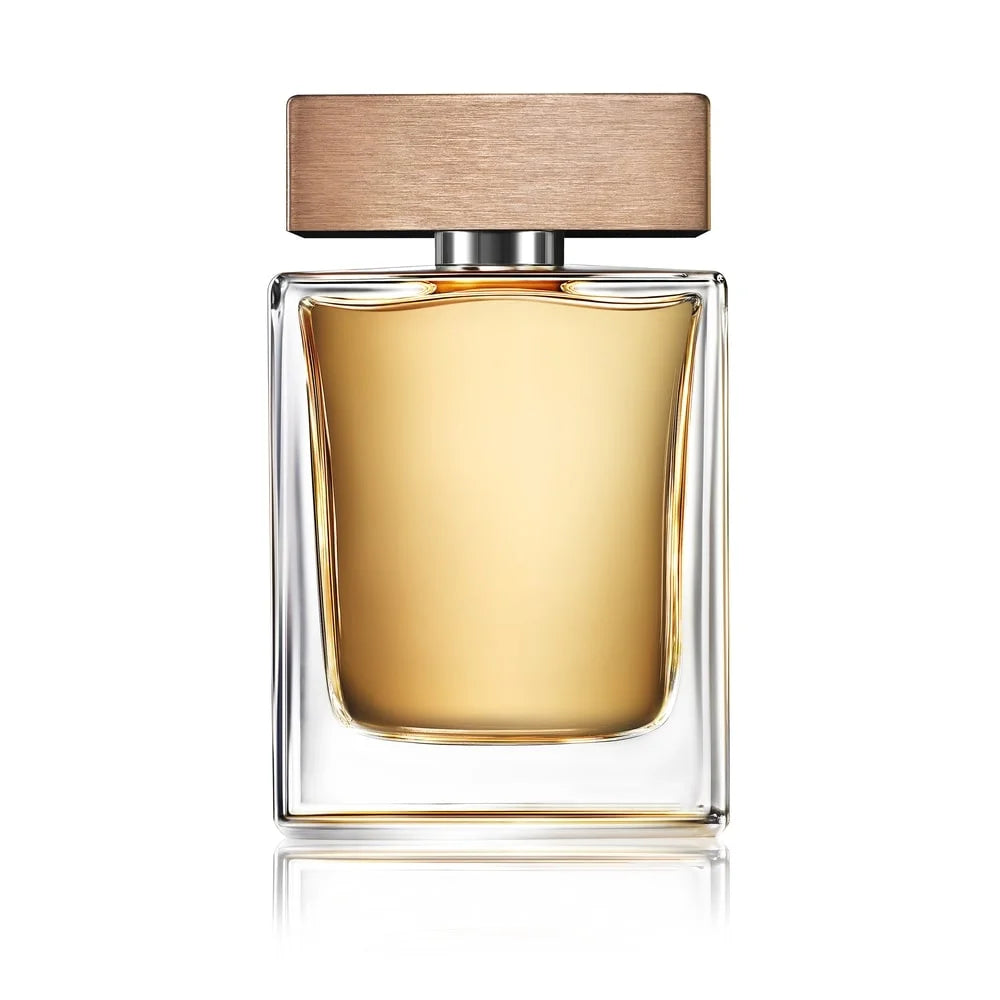
Cologne’s are the lightest type of alcohol-based perfume available. They have a low essential oil and a high alcohol content.
Early incarnations generally consisted of an essential oil blend made from citruses and herbs. A prime example of this format is the famous 4711 Eau De Cologne. The number 4711 refers to Glockengasse No. 4711, the address where it was made. The recipe for 4711 has remained unchanged since its initial launch in 1792.
But the use of perfume to scent the body is much older and can be traced back to the ancient Babylonian civilizations of Mesopotamia. Eau de Cologne is a more recent addition, however, having been introduced to the European royal courts by the perfumer Giovanni Maria Farina in the 18th century.
Farina, a resident of Cologne in Germany, created “Eau De Cologne” in 1709, at a time when perfume was seen as the ultimate status symbol. Extremely valuable commodities, aromatics were the preserve of royalty and the elite. But in a marketplace of heavy, cloying, and overly sweet perfumes, the lighter and more ethereal cologne took the royal courts of Europe by storm.
Eau de Colognes was originally designed for a unisex market but over time, they have been thought of more as a masculine product. Recently, however, parfumiers have returned to pitching their cologne recipes at a more unisex market once again. You will likely see those aimed particularly at women labeled as “Eau Fraiche.”
Is Cologne Different From Perfume or Aftershave?
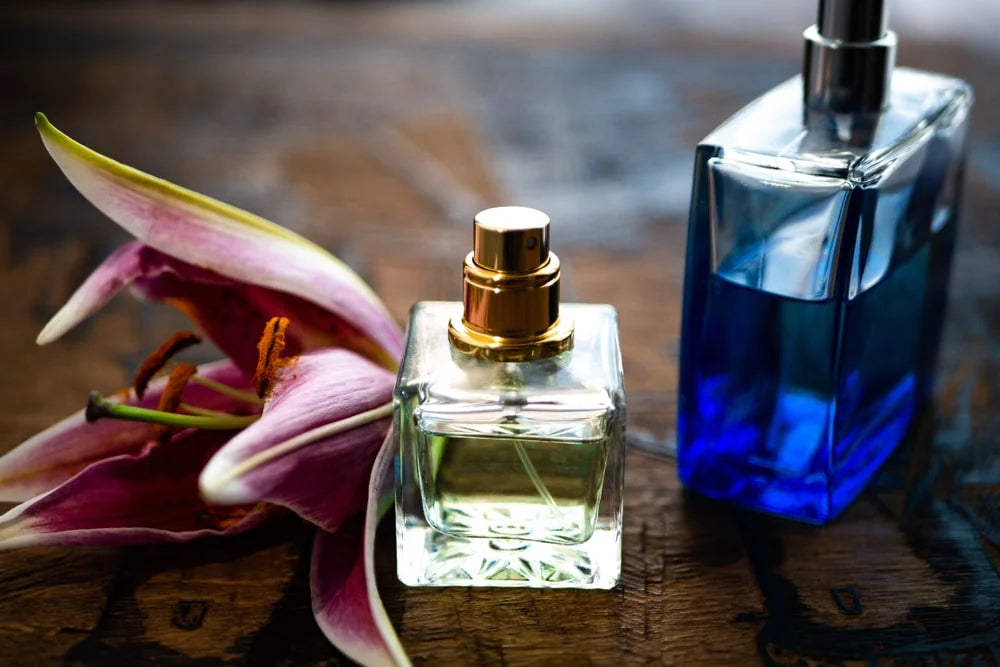
Perfume and aftershave are the same thing, just gendered!
But you may have noticed letters like EDP or EDT on your bottle.
These tell you how much fragrance concentrate (i.e. essential oils, fragrance oils, synthetic compounds, etc) has been diluted in an alcohol and water base.
While there are no hard and fast rules about the ratios of perfume type definitions in the industry, the general perception is thus:
- Extrait Parfum/Parfum (EP/P) is the strongest and has the highest ratio of about 15-30%. Extrait Parfum is the preparation that will last the longest on the skin.
- Eau de Parfum (EDP) is next. (Don’t confuse Parfum with Eau de Parfum) “Eau de Parfum” has roughly half the amount of fragrance concentrate that Parfum has with a ratio of 8-15%.
- Eau de Toilette (EDT) is almost half that of Eau De Parfum at 4-8%
- Eau de Cologne (EDC) is the most diluted with a ratio of just 3-5%. This will dissipate faster than other types of fragrance on the skin.
On the surface level then, it looks mathematically like you would just add more water and alcohol to make the fragrance more diluted. But there is more nuance than that and there are some safety considerations here. Some ingredients are regulated so they can only be used in tiny dilutions for example, so there might be the same amount of a certain oil in a cologne as there is in a parfum, because it would be dangerous to scale it up.
Don’t panic though. I’ll hold your hand through the safety bits.
How Long Does it Take To Make Cologne With Essential Oils?
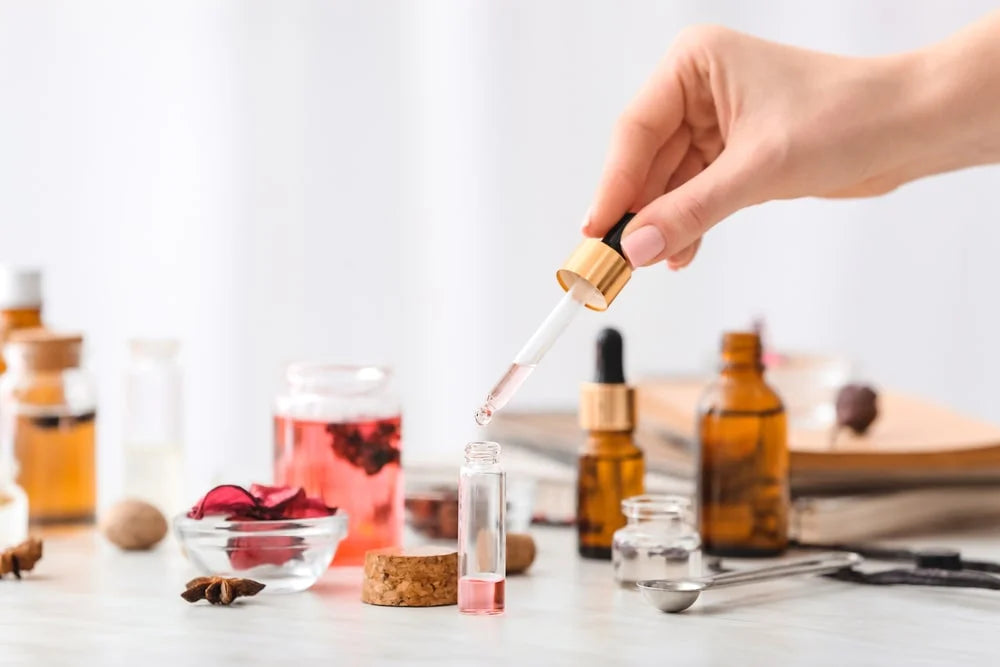
People often ask if is it possible to make cologne with essential oils in a day….
Simple answer…?
No.
Making colognes, perfumes, and aftershaves takes time and patience.
Ingredients need time to meld. Accords need time to go through chemical changes to alter and improve their scents.
How much time it takes depends on the brand of perfumer's alcohol you use. According to them, some might be ready in as little as two days (unlikely) or as much as two weeks, (much more likely). However, some may need as much as six weeks, which is preferable! The longer you leave a fragrance, the more it develops.
There are details on how to make Perfumed Oil (In Fragrance of the Week) if you need something you can wear it immediately. But, if you want Cologne with essential oils, you need to exercise a little patience. The results will be worth waiting for.
Designing a Cologne With Essential Oils
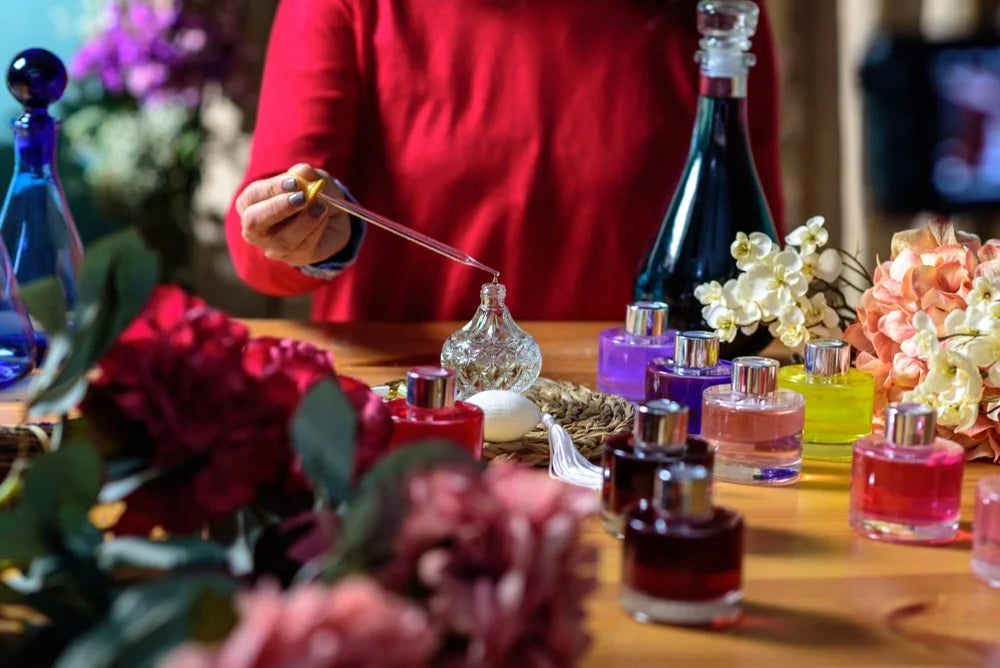
Who Is Your Cologne with Essential Oils For?
When designing Cologne with essential oils you need to ask yourself a couple of basic questions.
- Am I making an essential oil cologne for men?
- A women's essential oil cologne?
- Or am I making a unisex essential oil cologne?
Once you have defined the who, you can then go on to define the what.
What Do You Want Your Cologne with Essential Oils to Do?
When you are designing your own essential oil cologne recipe, it is no good just bringing together a handful of fragrances you like and trying to botch them together. A good fragrance needs structure and balance. Balance can be created by creating accords of scents and notes that harmonize with one another.
Just like you might envisage how to create a DIY project, painting, or planting a garden, it needs some imagination, planning, and experimentation. Give some consideration to what you want the fragrance to say, what fragrant journey does it take you on?
What do you want it to do?
Whether you are creating women's or men's essential oil cologne recipes or you are creating something beautifully unisex, planning is essential. Without it, your results may be disappointing.
Comparing Ingredients’ IFRA Guidelines
Before you get any bottles of essential oil choose your preferred scent, then look at the best way of achieving that by remaining safe.
This especially applies to essential oils like Cinnamon, Clove that are hot and can irritate the skin, and Bergamot which can be phototoxic and cause skin sensitivity. When you compare the safety data on the essential oil versus a similar-smelling fragrance oil, you might find you can get much more smell without irritating the skin.
As an example you might want to create the most perfectly glorious Jasmine perfume and matching Eau De Cologne in the world. You may have visions of a super strong, very rich, and uber intoxicating, and heady fantasia of Jasmine.
But then you research the safety data and your bubble bursts because the maximum dilution rate for Jasmine absolute i 0.65%. That’s hardly the enveloping floral blanket you’d imagined, I am sure!
But, it is not the end of the world because VINEVIDA’s NO. 44 - Jasmine fragrance oil has a maximum safety dilution rate in the same category of 31.48%, so you could use that as a happy alternative.
Consult the safety data at the very beginning of the process to avoid costly and unnecessary mistakes. There is no need to spend your hard-earned cash on an essential oil that cannot deliver your overall vision.
Understanding Scent Notes
The next important thing when you are designing your cologne with essential oils (or fragrant oils for that matter) is to think about how the constituents are going to behave and interact with each other. Understanding how scent notes work helps with the design process.
We talked about 4711 earlier. Since that’s one of the most famous unisex colognes in the world, let’s use that as an example.
Fragrantica says,
The top notes are Lemon, Bergamot, and Orange; the middle notes are Lavender and Rosemary; the base notes are Neroli and Petitgrain’.
(Top Tip: Fragrantica is a great place to learn about composition and scent notes in your favorite fragrances.)
As you can see 4711 is pretty much citrus and herb-based. It has this intensely refreshing and invigorating fragrance, dominated by Lemon. It is ethereal, and light and dissipates very quickly. As a cologne, it lacks heavy-hitting base notes that would otherwise elongate the scent of the fragrance on the skin. Nevertheless, despite how quickly the scent disappears it remains one of the oldest and popular Colognes in the world.
As we go, we will look at the top, middle, and base notes in turn, because it is easier to understand them that way. But when it comes to creating your fragrance, I’d recommend making base notes your starting point. Base notes are the strongest scent, so it can be easy to accidentally overpower the lighter top notes with them. Start with the strongest base scents then layer on top of them.
Start at the bottom and work up.
Top Notes
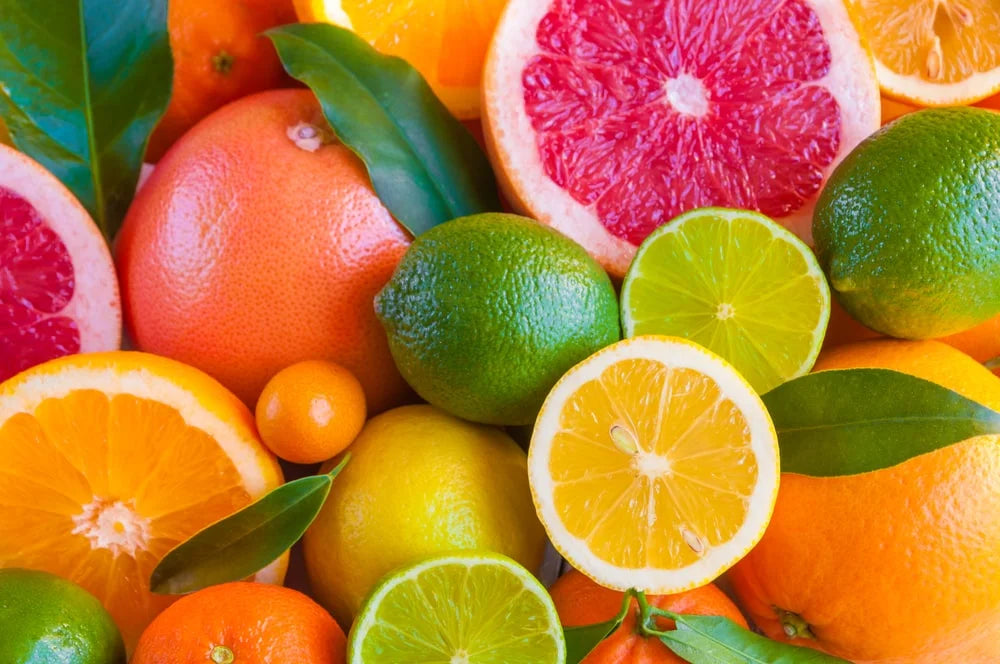
Top notes are the scents that you tend to recognize first when you smell a fragrance. They are usually the first to make an impression. The top notes fade the fastest as they are the lightest and most fleeting, usually because they are the most volatile. Some can be so brief (volatile) that they disappear quickly, without a trace. Beautifully ethereal, and mysteriously fleeting.
Given they last such a short time, you may question, why bother?
Well, let’s have a look at some examples.
- Citrus - Bergamot, Grapefruit, Lemon, and Lime
- Green - Mints, Lemongrass, Galbanum, and Rosemary.
- Spices - Coriander and Cardamom.
- Floral - Lavender and Chamomile
Without them, fragrances can seem dull, flat, and lifeless. Top notes are an essential part of the construction of the Cologne, as they contribute to the definition of the final scent.
Middle or Heart Notes
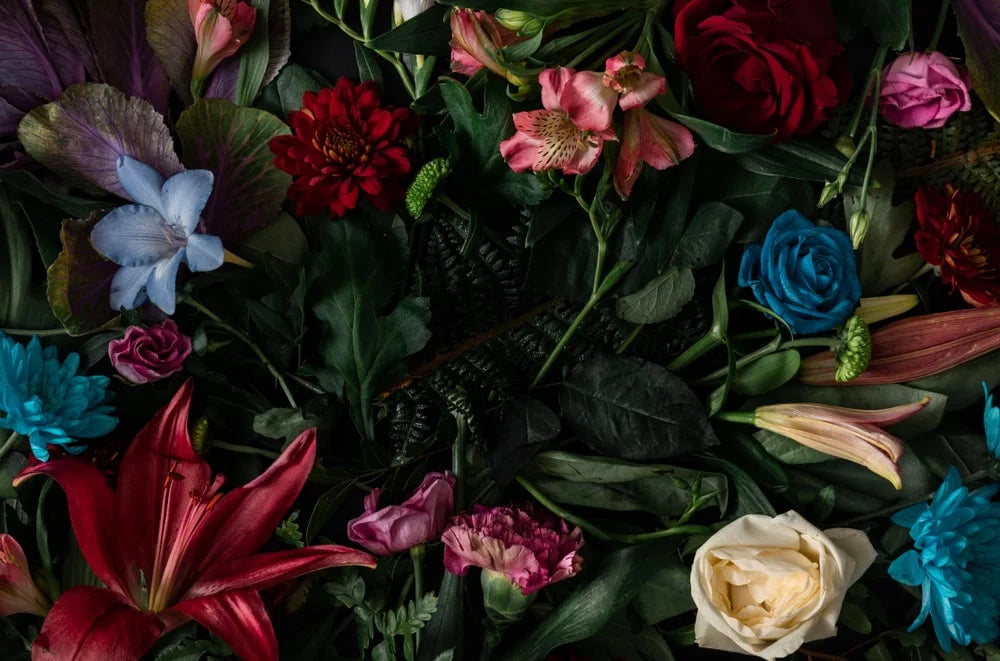
Middle (or heart) notes, as you can imagine, create the ‘heart’ of your fragrance. They give the fragrance more body and depth. It is these notes that make your fragrance more vibrant and alive.
It is the heart notes that you will smell the most. They last longer than the more volatile top which dissipates quicker so it pays to plan them carefully.
Perfume Heart notes are usually florals like rose, gardenia, jasmine, and tuberose. Careful balance is needed for these wonderful notes though, because flowers can be very heady. Don’t go nuts thinking that just because they are florals, you can add loads, because they can quickly verge on the narcotic.
Colognes also benefit heart notes like clary sage and ginger grass which offer a more vibrant green scent at that slightly deeper level. To add a broader definition to the overall scent use you can also try using spices like cinnamon, cardamom, and nutmeg too.
Base Notes
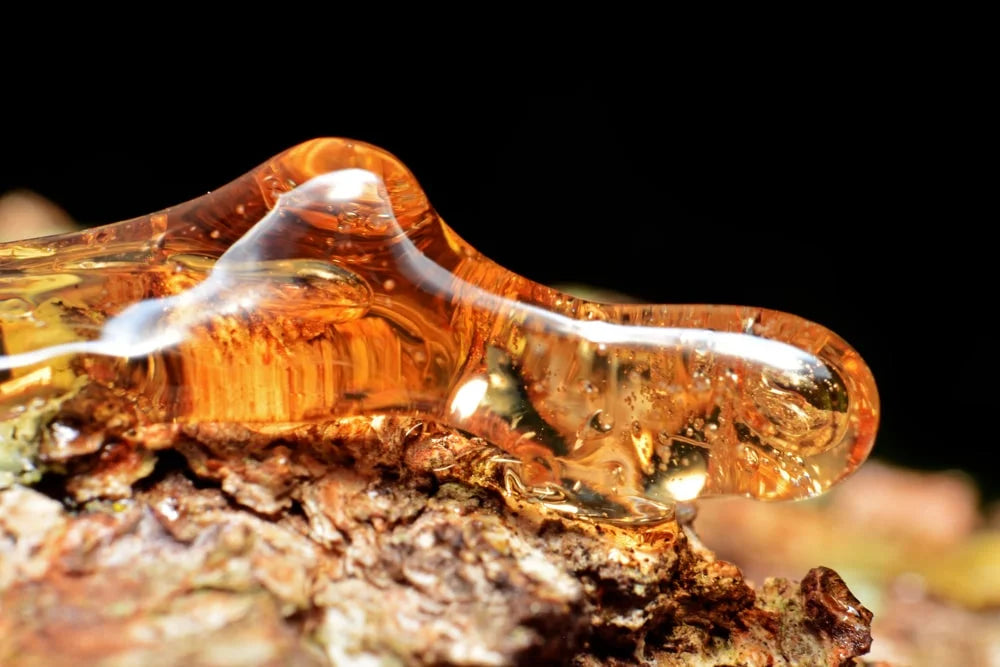
Base notes are the headier and stronger scents in the fragrance. They last the longest on the skin some lingering for hours. Base notes underpin the entire scent composition and anchor it. They are vital for creating a harmonious balance. That also applies to colognes designed to be fleeting, ethereal, and enigmatic.
I have a very special perfume oil that I use to raise my spirits in the direst of times. It has just one drop of Sandalwood Mysore in the whole composition. I can sometimes still smell it on my skin over 24 hours later…..even after being in contact with water! Some base notes are extremely special and can be spectacular.
Essential oils that are considered base notes come from a variety of natural materials including
barks, beans, grasses, pods, resins, and roots.
Benzoin, Frankincense, Myrrh, Oakmoss, Patchouli, Sandalwood, and Tonka Bean are all amazing base notes.
Vanilla is very popular in the global perfumery market, but it may interest you why it is so popular. Vanilla is very often associated as a scent that brings us comfort of some kind or brings back comforting memories for use like our Gran’s apple pie and custard. People tend to gravitate to scents like Vanilla when they want to feel comforted, safe, and secure on some level. So add it, if you feel you need a Vanilla hug!
My favorite is Benzoin because it is excellent as a fixative and helps your scent last longer, but it is also very easy to blend with other essential oils.
The Dry Down
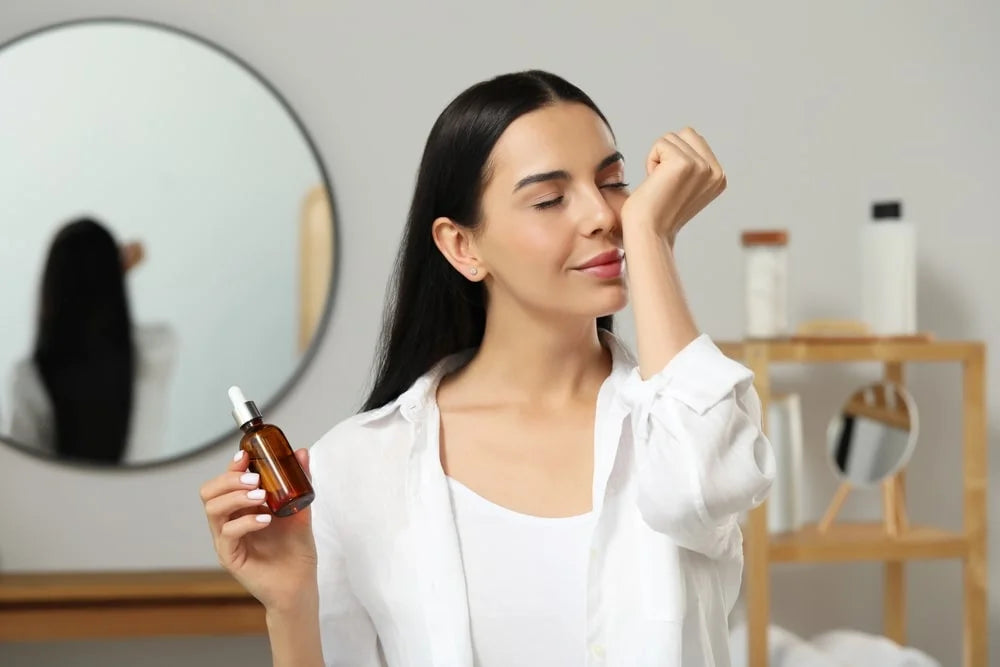
What on earth is the dry down?
This refers to how the final blend of the fragrance will change on your skin as it dries.
As stated, you smell top or head notes first, and they quickly disappear. Middle or heart notes, then slowly fade over hours. Then finally, only the base notes remain which last the longest.
When you first apply your fragrance, the top notes are all singing, and so it smells a certain way. But after about twenty minutes, the heart notes come to the fore. Meanwhile, all the top notes are dissipating and so the way the fragrance smells changes again. After the heart notes start to fade too, the base notes are left to sing their swan song alone.
When a professional perfumer designs a fragrance, they always have the dry down at the forefront of their minds. You should also be mindful of it when formulating your own cologne with essential oils.
What Ingredients Do I Need To Make Cologne With Essential Oils?
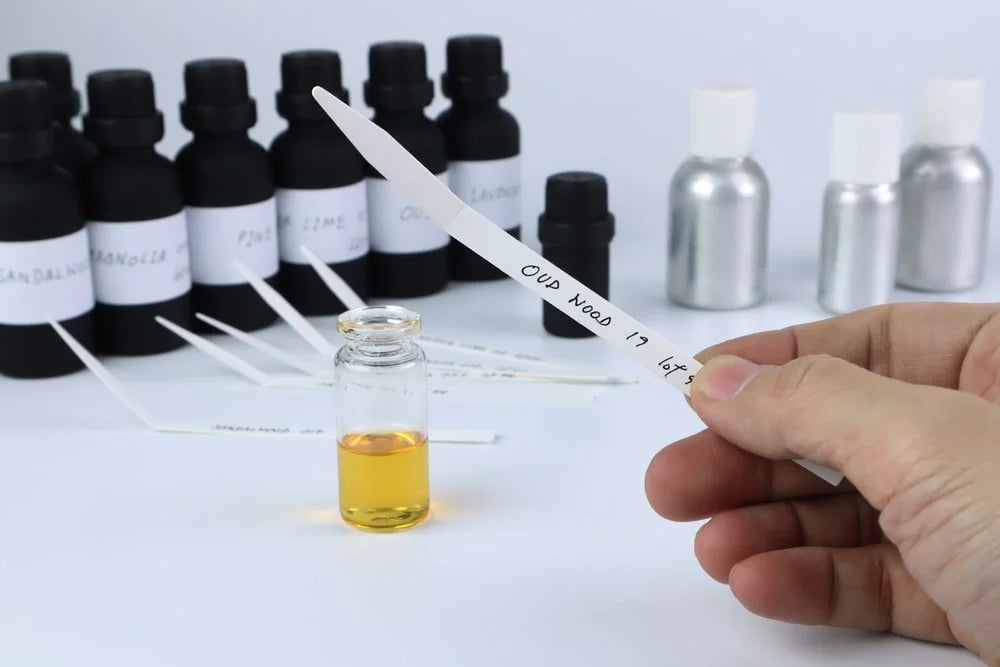
The only real specialist items you need to have a go at making your own Cologne with essential oils, but you do need a decent selection of essential oils and/or fragrance oils. Selection is key so you have plenty of choices.
Perfumers Alcohol
Alcohol is volatile so it helps to release fragrance molecules to disperse scent into the air. High alcohol content in a perfume improves the evaporation of the fragrance after its applied to the skin.
I’d recommend using perfumer's alcohol for your initial attempts at making Cologne with essential oils and/or fragrance oils.
Generally, perfumer’s alcohols have three principal ingredients with particular roles and functions:
Denatured Ethanol
Denatured Ethanol helps the aromatic compounds dissolve and blend, ensuring that they disperse evenly. It also inhibits microbes and unwanted bacteria to maintain the integrity of the fragrance and preserve its shelf life.
Isopropyl Myristate
Isopropyl Myristate acts as the solvent in perfumes helping to bind and dilute the essential oils. It also acts as an emollient and moisturizer and helps with skin absorption.
Mono Propylene Glycol
Mono Propylene Glycol is a co-solvent which means making essential and fragrance oils more soluble in alcohol. MPG also slows the alcohol evaporation so your finished fragrance dissipates slower.
Essential Oils
You need a range of notes to work with when creating your Cologne with essential oils. You want top notes like Lemon, Orange, and Mandarin, and middle notes like Cardamom, Nutmeg, and Clary Sage. You also want glorious base notes like Patchouli, Vetiver, and Cedarwood. I’ll give you a few more pointers on some good essential oil combinations in the section on accords.
Check your IFRA data before you buy any essential oils especially to make cologne. It will save you a lot of time and money. As already stated, the low maximum dilution (0.65%) might persuade you to look at a different essential oil in some cases. Rose geranium, for example, has a maximum dilution rate of 4% ratio. Not only does that make it that much more versatile, but it is less money too!
The IFRA guidelines for each essential oil can be found in the documents under the pictures on each of our product pages. The IFRA guidelines specifically for making colognes are found in categories 3A and 3B (Actually the same applies to fragrance oils.)
Benefits of Adding Fragrance Oils To Your Cologne With Essential Oils
You can combine fragrance oils and essential oils to create your own unique scent.
Hard To Capture Fragrances
Fruity notes work beautifully alongside spices, woods, and florals in cologne with essential oils. However, fruits like apples, pears, strawberries, and raspberries don’t have essential oils. Fragrance oils fill that hole.
The fragrances of spring flowers like Narcissus and Hyacinth are notoriously hard to capture so the essential oils are usually very expensive. Fragrance oils can offer a way of using them more affordably and give you room to experiment without worrying too much about mistakes.
Sustainable for The Planet and Your Wallet!
Fragrance oils also have a really important role to play in the sustainability of the planet. Rare and precious materials like Ambergris, Oud, Amber, and Sandalwood can be easily substituted with these more sustainable and commercially viable replacements. I would urge any beginner to use the fragrance oils in your Cologne with essential oils until they feel experienced and competent enough to make the best of these more expensive essential oils...
Being Creative With Fragrance Oils
Before you buy any fragrance oils, review the IFRA data to ensure you can use enough.
Again, find the product page on the VINEVIDA website, look under the picture of the bottle, look for documents, and find IFRA docs
For cologne, you want categories £A and 3B
There are some possible disappointments if you are not careful.
- NO. 3100 -Inspired By: Tobacco Vanille By Tom Ford is just 0.78%
- NO. 40 - Gingerbread is extremely low at 0.08%
- NO. 1300 - Inspired By: Another 13 By Le Labo is 0.51%
It’s not always bad news.
NO. 3100 -Inspired By: Tobacco Vanille By Tom Ford is a very deep fragrance. To add that deep dark sense of mystery, you probably could get away with using so little.
But, NO. 1300 - Inspired By: Another 13 By Le Labo has a lot of top notes and heart notes. It lacks those big booming base notes. It could easily get lost at a small dilution because it lacks those big, booming base notes. You will need to support this one with other base notes to give it more body and depth.
Equipment To Make Cologne With Essential Oils
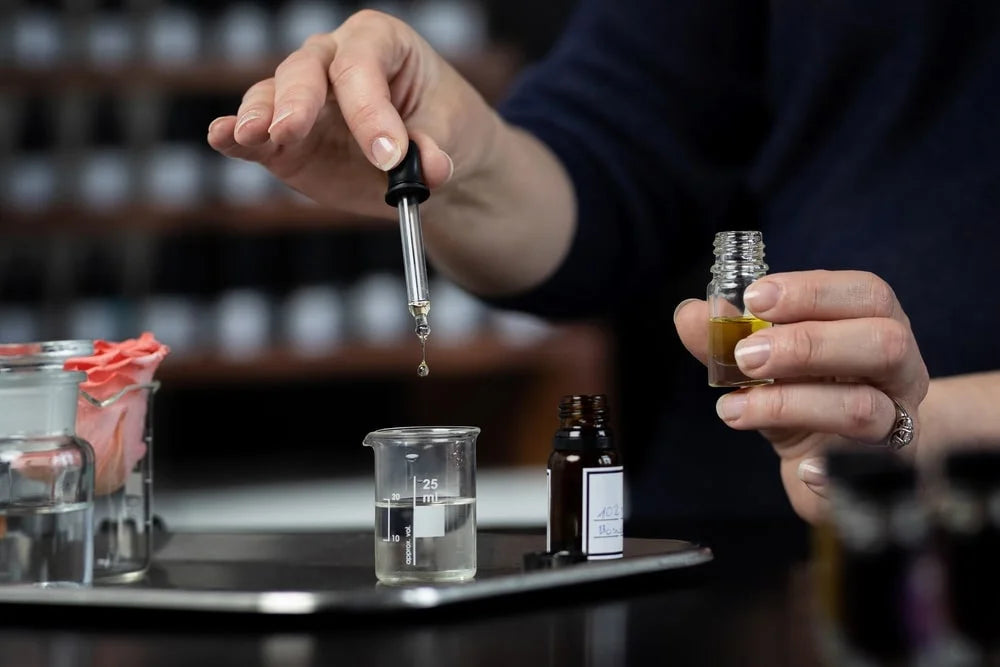
To make Cologne with essential oils at home you don’t need too much fancy stuff. However, it is worth investing in professional beakers, scales, and bottles as your hobby grows. To start, you will need:
Receptacles For Accords
When you make your cologne with essential oils you will make accords. These are like harmonious sections of the cologne. We need to keep them separate from one another while we perfect each other. To do this you need several little beakers or bowls. Glass or Pyrex measuring ones are the best which you can get from lab equipment suppliers. You could also use ceramic, as long as it is not porous and the glaze is intact. If the glaze is cracked or crazed it will absorb your cologne so you don’t want that. Avoid using plastic as it can absorb and react to oils and alcohol. See what you have at home first. You can always buy specialist lab equipment if you want to expand on your hobby later.
Disposable Pipettes
Disposable pipettes are useful for accurate measuring and you can be more controlled with how much you use with a little dropper. However, they need to be scrupulously clean so you don’t introduce any bacteria or microbes. Bacteria will destroy your cologne with essential oils so you either need to be able to wash them well or to have ones you can dispose of.
Smelling Strips
Smelling strips allow you to define the aroma of your Cologne with essential oils without putting it on your skin. You can buy these relatively inexpensively, in small or larger amounts, or use blotting paper cut into thin strips.
Digital Scales
If you want to pursue more fragrance-making, buy a set of scales! As a beginner, you can work in drops, but in reality, drops are not an accurate system since oils come in different sizes, viscosities, and even weights.
10 drops of Benzoin is much heavier than 10 drops of Lemon essential oil.
Working in drops is an ok place to start, but if you want to do it properly, weights are much better. However, most home kitchen scales don’t go low enough to measure tiny drops of essential oil for your Cologne with essential oils. If you want to work more professionally, purchase a small set of jewelry or gemstone scales. Get one that goes right down to 0.01g, if you can. It is easier to measure accurately if the scale moves in increments of 0.01g.
Scent Bottles
After all the work you put in, your Cologne with essential oils deserves an extraordinary bottle. Dark bottles help preserve your fragrance from degrading from light damage. You can easily buy a selection of different scent bottles these days, including ones with spray tops.
How To Make Cologne With Essential Oils
Creating Accords
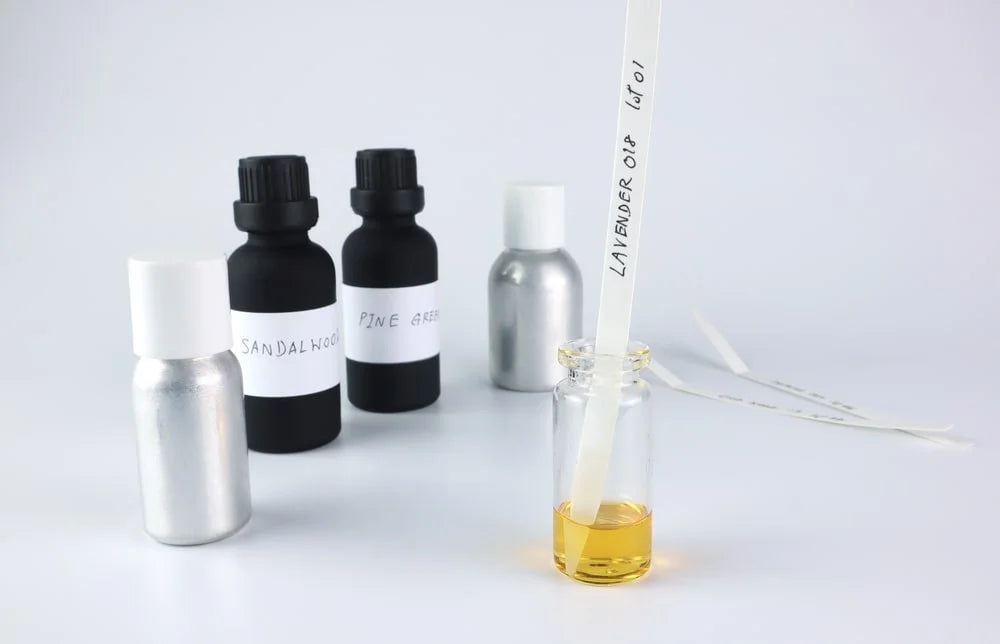
The first thing we need to do is create an accord, think of it like a flower in a garden. You plant a red one, an orange one, and a bright pink one, that all harmonizes with one another. But then you add a bright blue one and suddenly it all goes off-kilter. Yet, you know it is the ‘blue accord’ that caused the imbalance.
Accords help you understand the structure of the scent and identify where something could go wrong. If you just chuck a whole load of oils together in your Cologne with essential oils, it will be hard to work out where and what went wrong.
Creating accords gives you control over the process and helps you avoid making costly mistakes.
Experimentation
Experimentation is the name of the game and even professional perfumers do it. They may do several different trials in the journey of making a new scent. It is part of the process and a very important one.
You may feel it slows you down and is holding you back from that instant gratification you want. See it as your friend instead, a guide, helping you to create a wonderful scent and saving you both money and time along the way. It does this by highlighting your mistakes early on in the process and stops you from making expensive ones!
Experimenting and creating accords helps you to build a library of what works well together. You will be able to turn to these accords time and again. Taking time to develop them will pay off in the future.
Pairings
Comparing food companions is a great place to start formulating a possible accord because they are usually the most obvious to us.
Let's take the humble Orange as an example. Orange is a top note, but often it is paired with heart or base notes, even in food recipes, because it creates harmony.
- Top note pairings: Orange and Lemon, Orange and Mango, Orange and Pineapple
- Heart note pairings: Orange and Ginger, Orange and Cardamom
- Base note pairings: Orange and Chocolate, Orange and Cinnamon, Orange and Vanilla
Every one of these pairings will make a harmonious accord to use in a Cologne with essential oils.
Record Everything!
When creating your accords and progressing through your fragrance construction, make sure you record EVERYTHING. Record how many drops you used, how much alcohol you used, and what you thought of that accord. Noting your observations and first impressions can be key.
Working in this way, when you get a result you adore, you can REPLICATE it. Rather than scratching your head trying to remember how you made it.
It may seem like a needless step, but I assure you it is not and is intrinsic to your overall success.
Accord Suggestions
You might still be wondering what essential oils are best for your Cologne with essential oils and trying to figure out what might work well as an accord.
Let me help you with some suggestions.
| Accord Suggestions | ||||
|---|---|---|---|---|
| Top Note Accords | Lemon and Lime | Eucalyptus and Spearmint | Mandarin and Rosemary | Grapefruit and Thyme |
|
Middle Notes Accords |
Rose and Lavender | Honeysuckle and Jasmine | Cardamom and Neroli | Ylang Ylang and Copaiba |
|
Base Notes Accords |
Vanilla and Amyris | Cedarwood and Amber | Patchouli and Vetiver | Frankincense and Myrrh |
I’m Still Confused, I’m Starting From Scratch, What Should I Buy?
I hear you! If you have no experience in this it can be confusing. In my experience, these are what I suggest you buy for making a unisex Cologne with essential oils.
- Top Notes: Sweet Orange, Lemon Eucalyptus and Grapefruit
- Middle Notes: Cardamom, Nutmeg and Neroli
- Base Notes: Benzoin, Amyris, Patchouli and Cedarwood
You can make truly wonderful varieties of Cologne with essential oils from these particular essential oils and absolutes.
I would also buy the following soap and candle fragrance oils to give you a bit more depth and range too.
Even Cologne with essential oils for men needs a floral note or two, to bring it alive and make it vibrant and sparkling. You can add more to tip it to the feminine side or add more base notes for a masculine finish.
How to Create An Accord
Grab your perfumers alcohol and in separate glass beakers dilute your chosen oils down to 10%. So in 10 ml of alcohol add 1 ml of oil. This is the same for both essential oils and fragrance oils.
Take a pipette (clean one for each oil please) drop one drop onto a smelling strip and note the aroma, strength, and intensity of it. Lemon essential oil will often overpower Mandarin which is lighter and less of a thug.
Use this information to create your accord, you know Lemon is strong, so use more Mandarin and less Lemon to make a more harmonious accord.
Once you are sure the balance is right, create that accord. Or just record it for now while you work on some others.
Work in this way mixing oils until you feel you are building up the picture of the scentscape you are trying to achieve.
Eventually, you might end up with 3 or 4 finely balanced accords. This is where you then want to work combining these accords to see if they work together. It is where you will spot any mistakes or disharmony!
Finally, you may have two accords left to combine to create your final masterpiece, your very own Cologne with essential oils!
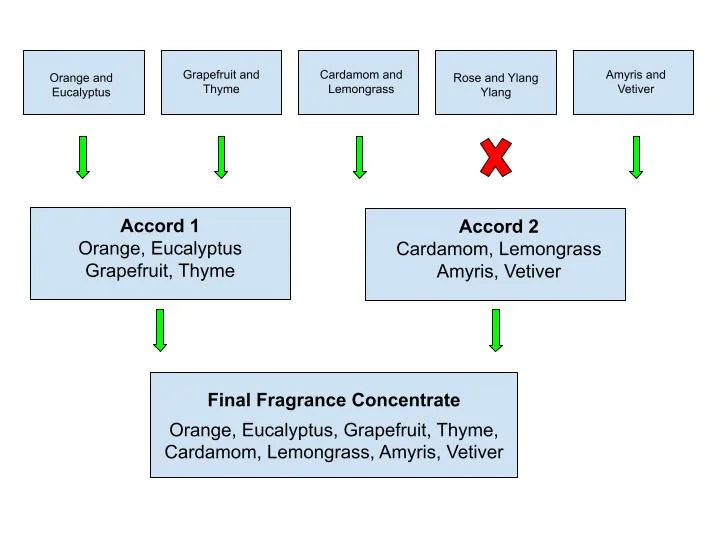
How Much Fragrance Concentrate Do I Need?
Before you start making your Cologne with essential oils let’s just remind ourselves of the general dilution rates for producing a variety of fragrances:
- Extrait Parfum/Parfum (EP/P): 15-30%.
- Eau de Parfum (EDP): 8-15%
- Eau de Toilette (EDT): 4-8%
- Eau de Cologne (EDC): 3-5%
What this means is, that to make 100ml of Eau De Cologne with essential oils, you will need 3-5% (3-5ml) of your final volume to be made up of your fragrance concentrate.
If you want to make a Parfum, notch that up to 15-30% or 15-30ml to make 100ml.
You can dilute the final mix down with distilled water to make it go further but you must always make sure you have a much higher alcohol-to-water ratio. Otherwise, you will reduce the alcohol's ability to inhibit microbes and it could go off.
Recipes to Make Cologne With Essential Oils
I have had wonderful fun tinkering with Accords to bring you these recipes for Cologne with essential oils.
I have done three different recipes to show you how to create one with only essential oils, one with only fragrance oils, and one that combines the two.
To Add Carrier Oil Or Not?
Adding Jojoba or Sweet Almond carrier oil will give your fragrance a more oily texture and create a type of perfume oil. Needless to say, it is kinder to your skin and keeps it hydrated and moisturized, alcohol can be very drying on your skin.
With the addition of the carrier oil the scent can also last longer on your skin. It also tempers and softens the effect of the alcohol on the nose.
It is up to you to choose to include it, or not, it is entirely your preference.
I have spent ages working on these recipes, but I still want you to feel that you can experiment with them. Especially, if you think you might like something better. Please experiment! The more you experiment and explore, the more knowledge, skills, and expertise you develop.
They will all make 100ml of Cologne with essential oils at a 5% dilution.
20 drops of essential oil is roughly equal to 1 ml, you will need 100 drops of essential/fragrance oil to make 5 ml of fragrance concentrate. (Don’t forget to stick to your IFRA maximum safety dilutions rates too)!
You Will Need:
- Measuring jug
- Stainless steel spoon
- Funnel
- 100ml fragrance bottle
- Label
Ingredients:
Without Carrier Oil
- 70 ml of Perfumer’s Alcohol
- 25 ml of Distilled Water
- 5 ml of Fragrance Concentrate (recipes below)
With Carrier Oil
- 60 ml of Perfumer’s Alcohol
- 10 ml of Jojoba or Sweet Almond Carrier Oil
- 25 ml of Distilled Water
- 5 ml of Fragrance Concentrate (recipes below)
Method:
- If you are using a carrier oil, combine your fragrance concentrate and carrier oil into a large measuring jug.
- Add your perfumer’s alcohol and stir.
- It will look cloudy at first, this is normal, and will settle to become clear.
- Finally, add your distilled water and combine well.
- Use a funnel for ease and decant into your chosen fragrance bottle.
- Label it, listing all ingredients for safety reasons, but go wild with the label and create something beautiful.
- You need to allow your Cologne with essential oils (or fragrance oils) to sit for at least 24-48 hours before use. Be patient, you know you can!
- Ideally leave it for up to 6 weeks to fully mature, if you can bear to.
Fragrance Concentrate For Men's Cologne With Essential Oils
This is wonderfully enlivening and uplifting, rich in citrus oils with a spicy heart and deep, woody finish. Fresh, clean, and perfectly masculine.
Top Notes:
- 20 drops of Lemon Essential Oil (Citrus limon L (Burm.) F. )
- 38 drops of Lemon Eucalyptus Essential Oil (Eucalyptus citriodora)
Heart Notes:
- 10 drops of Cardamom Essential Oil (Elettaria cardamomum)
- 10 drops of Black Pepper Essential Oil (Piper Nigrum)
Base Notes:
- 15 drops of Amyris Essential Oil (Amyris Balsamifera)
- 7 drops of Vetiver Essential Oil (Vetiveria zizanoides)
Safety: Do not use it in the first 16 weeks of pregnancy.
Fragrance Concentrate For Women's Cologne With Essential Oils
One of my favorite Colognes is 4711 Rose Eau de Cologne. It is soft, powdery, and hopelessly romantic with an intense rosy embrace. This Cologne with essential oils and fragrance oils is inspired by that wonderfully romantic, floral sensation.
Bright fresh citrus greenery gives way to abundant florals in the heart space, with a glorious smooth woody finish. It’s like embracing the essence of Rose herself.
Top Notes:
- 5 drops of Bergamot Essential Oil (Citrus bergamia)
- 10 drops of Mandarin Essential Oil (Citrus reticulata)
Heart Notes:
- 3 ml of NO. 33 - Fresh Cut Roses Soaps and Candles Fragrance Oil
- 20 drops of Rose Essential Oil (Rosa damascena)
Base Notes:
- 2 drops of Patchouli Essential Oil (Pogostemon cablin)
- 3 drops of Amyris Essential Oil (Amyris Balsamifera)
Safety: Do not use it in the first 16 weeks of pregnancy.
Fragrance Concentrate For Unisex Cologne With Essential Oils
This is a Cologne with essential oils to suit anyone, intentionally genderless and extremely versatile. I use mine for a quick spritz and burst of fragrant gloriousness every time I walk into the bathroom.
It meets you with a burst of citrus for a zesty welcome before unfolding into a crescendo of florals and fruits before being smoothly seduced by the divine smoothness of precious Amber.
Top Notes:
Heart Notes:
Base Notes:
Hopefully, these recipes have given you some guidance and you can see how they are structured through the scent notes. I highly encourage you to experiment and try new things. The more you experiment, the more confident you will become in your choices.
How To Use Cologne With Essential Oils
Cologne with essential oils is super easy to use. It just depends on what kind of bottle you have used.
We have followed the IFRA category for applying your Cologne with essential oils to recently shaved skin. So you can just splash it on after a shave from a necked bottle. Simply pour a dime-sized amount into the palm of your hand and work between your hands. Pat it onto your face in an upward motion, avoiding your eyes. Allow to dry naturally.
If you have used a spray bottle, use it in the same way as perfume, spraying a small amount behind your ears on your neck, and at your wrists. Avoid spraying near the eyes and face.
If you do happen to get it in your eyes, rinse well with clean water. If irritation persists, seek immediate medical advice, taking the clearly labeled bottle with you.
It is best to store your Cologne with essential oils in a cool, ambient place in the dark. Reducing the light will help it to last longer. Use it up within 6 - 12 months.
The Final Word
I feel like we have been on a bit of a journey with our Cologne with essential oils. But what a wonderfully fragrant journey it has been, and I have loved it! I hope that you do too.
Do Some Reading
To start, have a read of How To Make Perfume With Essential Oils and just familiarize yourself with the concept.
Patience
Understand this is a process and it takes time. Time to work out your accords and time for your final Cologne with essential oils to ‘mature’. As I said before, if you want immediate results, make a perfumed oil instead. Find a Perfume Oil recipe here.
Design
Like any good project, there is an element of design and planning needed. I LOVE the design process, having taught interior design for some years, I learned the value of planning a design. It allows you to see mistakes, see things that don’t fit…or in this case, smell!
Remember the ‘who’ and the ‘what’. Who is it for and what is the story you want to tell with your Cologne with essential oils? What do you want it to say? It is going to be hopelessly romantic and feminine or super sultry and in your face? Have an idea in your head of what you are trying to create.
Taking things step by step and creating your accords and having a plan, will help you sniff out those imposters in your Cologne with essential oils. It is then easy to just remove the offending accord and this stops you from making potentially expensive mistakes.
Ingredients
You don’t need a lot of specialist stuff, so don’t panic. Buy a good perfumer’s alcohol and some distilled water. Other than that you do need a half-decent selection of essential oils and/or fragrance oils to create your accords. You may also want to add that carrier oil to nourish your skin.
Equipment
You don’t need loads of fancy equipment either to create Cologne with essential oils at home.
Smelling strips are super useful, but you can also use blotting paper cut into strips.
Glass lab beakers and a gemstone digital scale will be very useful if you want to pursue it as a hobby in the future.
Do treat yourself to some beautiful scent bottles though and make the most of your beautiful creations. Especially given the time and effort that have been put into creating them.
I Had a Blast!
I have had an absolute blast creating this article for you. It has been a wonderfully fragrant journey on which I have learned so much. (Like checking the IFRA data before you develop your recipe…sighs). That’s the thing with perfumery, there is always something new to try, a new accord to create, and accords to mix to create something scentsational!
If you are still a bit unsure of making your own Cologne with essential oils, don’t be. Just do it! You won’t regret it.












